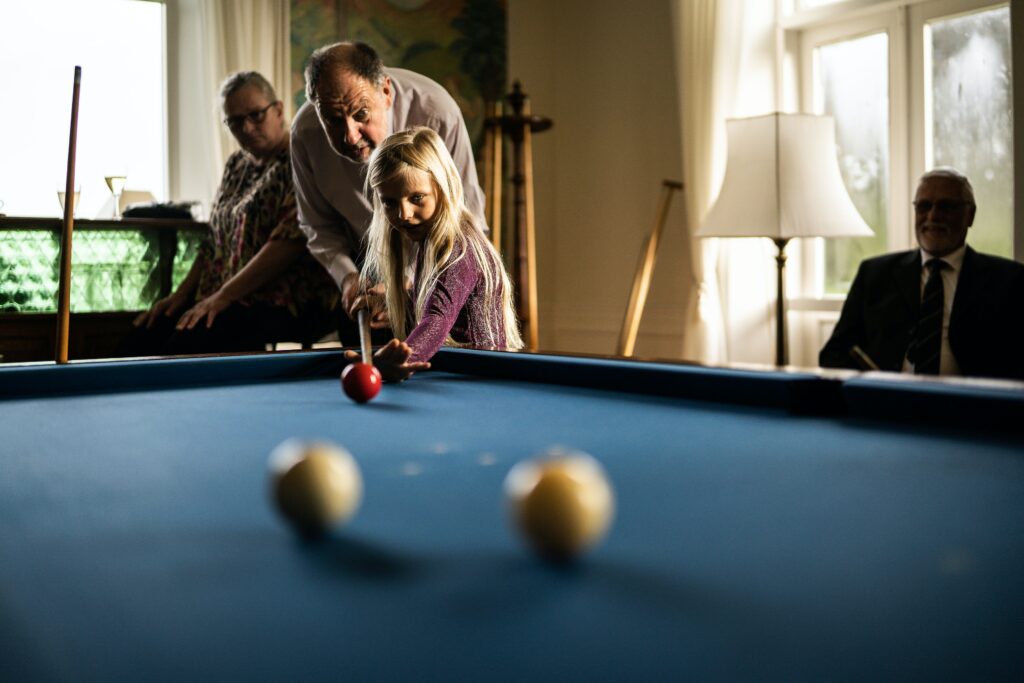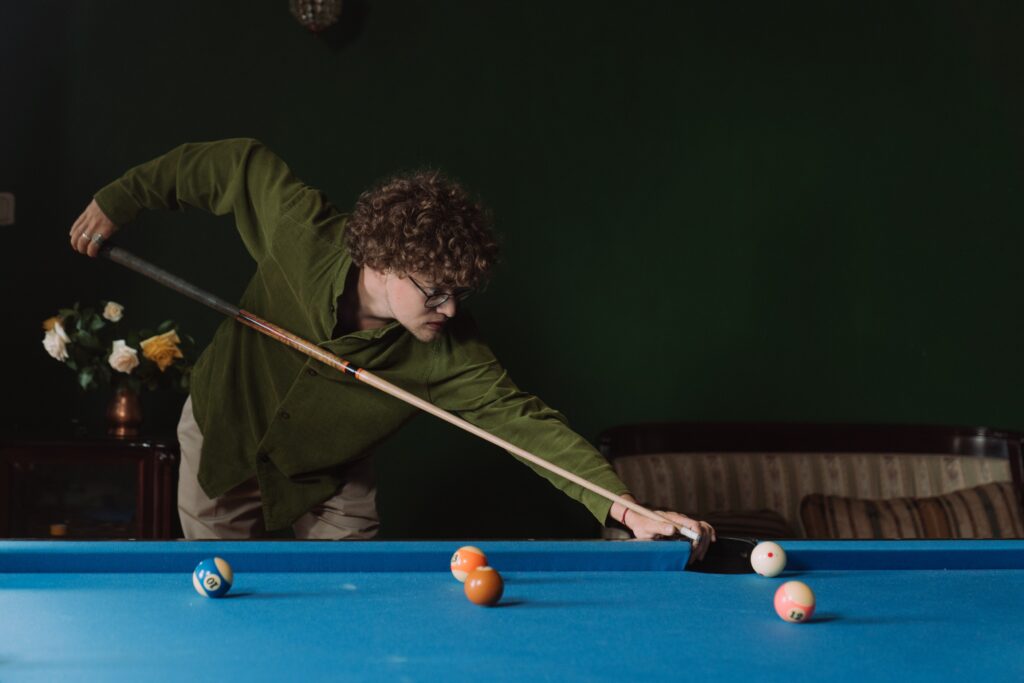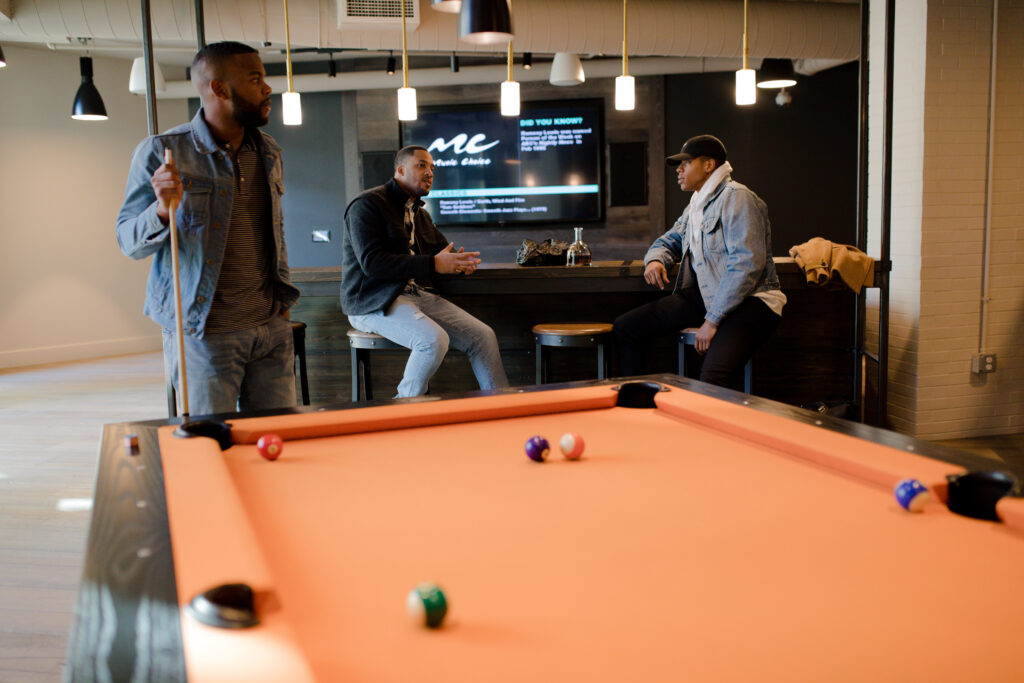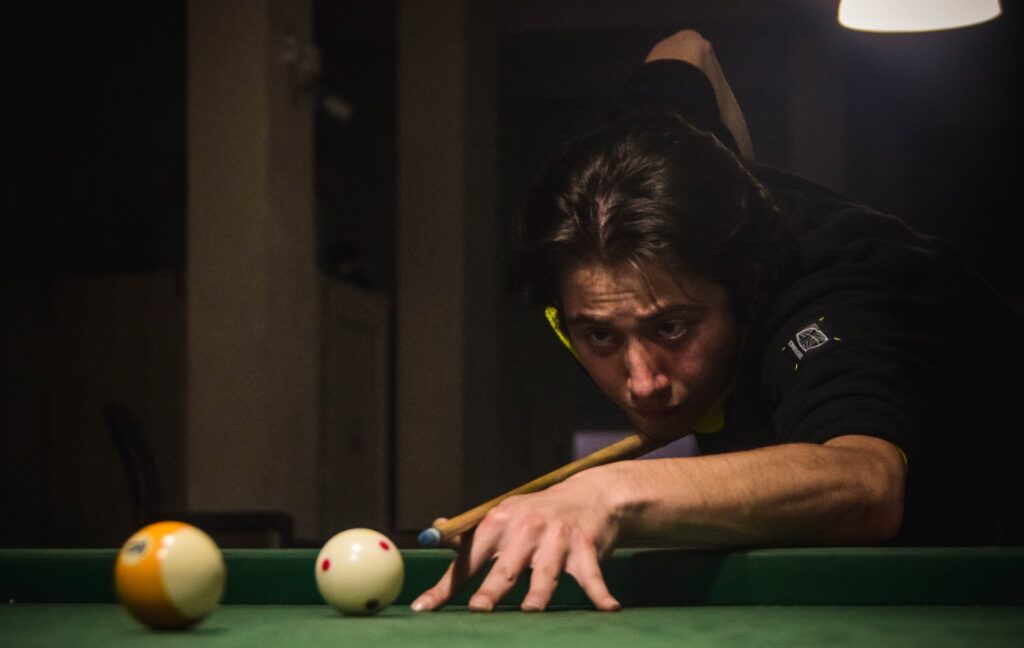As an Amazon Associate we earn from qualifying purchases.
If you want to get into the pool game, you should know how to hold a pool stick. It’s important that you learn the proper way to hold a pool stick to give you the best accuracy and confidence as you play. If you want to learn how to do it, we’ve got you covered.
Learn How to Hold a Pool Stick
The pool cue stick is your main weapon in a game of pool. It’s your tool for making shots. You need to learn to hold it correctly for better accuracy and precision in your shots.
Just follow these steps to get you started on holding a pool stick.

Step One: Hold the Pool Cue with Your Dominant Hand
Hold the pool stick with your dominant hand and then level it to your waist. Grab the pool cue shaft or the rear end.
There should be a tape at the rear which you can use as a guide where to hold. Place your hand behind the tape around 4 to 5 inches distance. Your right hand should do a 90° angle with your cue and feel relaxed.
Some additional pointers:
- A lot of first-time pool players commonly hold the pool cue stick tightly. Your grip should always be comfortable and relaxed.
- Aligning your body in the same line with the cue ball. This helps improve your shot accuracy.
- Use your thumb and index finger to generate more power in your shots.
Step Two: Lean Your Body Comfortably Towards the Table
Lean your body towards the table and until your eye level with the cue ball. This will increase the likelihood of you hitting your desired target. As you lean towards the table, your dominant hand should hold the rear end of the pool stick while your other hand acts as a rest for the other end of the pool stick.
Your other hand makes sure that your pool stick doesn’t touch the cue ball or any of the object balls. You don’t have to make a bridge yet on this step.
Additional pointers:
- Avoid blinking as much as possible. Blinking can affect the angle of your aim.
- Bend your legs if you have to. Just make sure that you feel comfortable with your position.
- As a tip for women, since you will be leaning over the table, we recommend you avoid wearing low cut shirts or tops so that your bra isn’t visible.
Step Three: Use Your Other Hand to Make a Bridge
After the gripping and positioning of your body, making the bridge with your other hand comes next. You can do your own bridge and a lot of pool players tend to do so.

However, here’s the basic way to do it:
- Place your palm open on the pool table. Your palm should face the pool table’s surface.
- Commonly pool players keep their other hand behind from the cue ball for at least 6 inches to 8 inches.
- Place the cue tip of the pool stick in between your thumb and index finger. You can also use your middle finger for the grip.
Most first-time pool players often go for this type of bridge. It’s called the open bridge and we will discuss it further in the article. If you don’t feel the open bridge, you can do your own variation of bridge that works for you.
Additional pointers to remember:
- Spread your fingers wide when you put your palm on the pool table. It’s for getting balance since you don’t want to suddenly tilt your fingers when taking a shot.
- Don’t be too rough with the cue stick. Slowly slide the cue stick between your thumb and index to avoid hurting or irritating your skin.
- Your fingers and hand should stay firm throughout. Shaky hands or a simple tremble can affect your shot.
Step Four: Grip the Cue Stick and Keep Your Eyes on the Target
After getting into position, this is where you start to firmly grip the cue shaft. Put all of your concentration on the area where you want to hit and on to the cue ball. Visualize the shot you want to take and how you’re going to take it.
Additional pointers to remember:
- Where you hit the object ball matters. The most basic thing to do for beginners is to hit the center of the cue ball. However, as you get better you’ll learn to hit the cue ball at other angles for better positioning.
- Relax your body and make sure your cue stick is aligned with the cue ball that you can also see the object ball.

Step Five: Maintain Firm Grip and Take Your Shot
Now that you have your shot in mind, it’s time to gather momentum by sliding your cue stick forward and backward to get the feel of the motion for the shot. If you don’t like the feel, you can stop and readjust your shot.
Once you feel comfortable with taking the shot, make sure your body feels firm and steady and your bridge is stable. Afterward, take the shot by moving the cue stick backward and then forward with enough force.
Remember to follow through and elevate the cue stick a little so that it won’t hit the cue ball and object ball for a foul. Other things to take note of:
- Maintain your body position for a few seconds after taking a shot. This will help you to become consistent with every shot you take.
- When winding up a shot, the bridge is very important. Make sure the bridge is comfortable and not rough on your skin.
If you’ve ever shot a gun before, you may notice similarities in holding a handgun and pool cue, along with the mental focus that is needed with both. While shooting a gun is much more serious and there is more responsibility involved, both tools have similar traits when it comes to holding them.
Parts of a Pool Stick
Learning the parts of the pool stick helps you understand how the pool stick works and how to hold it effectively. Here are some crucial parts of a pool stick that will make it helpful for you to learn how to hold a pool stick.
Pool Cue Tip
The pool cue tip is where you hit the cue ball when taking a shot. It usually consists of leather. Cue tips can have sizes from 11 mm up to 14 mm.
Cue tips vary in hardness and it affects how the cue tip hits the cue ball. If you want more power in your shot, you should use harder cue tips. If you want better control in your shots, use softer cue tips.

Pool Cue Ferrule
Some pool players don’t know what a ferrule is and it’s understandable. You can find the ferrule right next to the cue tip. Most people often underappreciate the ferrule.
The ferrule helps reduce the vibration you get when taking a shot. It helps you be more consistent with your shots and keep your cue tip stable.
Pool Cue Shaft
The shaft is where you mostly hold the pool stick with your dominant hand. Most shafts use maple wood yet there are also some shafts made out of graphite or fiberglass.
Most shafts have a taper that allows players to have an estimated distance on where to hold the shaft and for consistent grip and shot.
Pool Cue Forearm
The forearm is the part of the pool stick that rests on your bridge. It’s usually adorned with designs and overlays. It has a protective glossy coating to protect itself and your hands.
Types of Bridges
As we mentioned, there are various ways for making a bridge with your fingers. Here are some of the most common ones.
- Open Bridge: is the most common type of bridge in pool. It’s also one of the easiest to learn and master.
- Closed Bridge: a lot of professional pool players use the closed bridge because it gives you more accuracy in your shots.
- Rail Bridge: this bridge is used when the cue ball is close to the rail that your hand has no room to make a normal shot.
- Mechanical Bridge: mechanical bridge makes use of a stick bridge or extension. Pool players use this when the cue ball is far away that you can’t make a proper shot position.
Conclusion
Learning how to hold a pool stick is one of the basics you need to have if you want to play pool. If you learn how to properly do it, you’ll see a lot of improvement with your shot accuracy and shot power.